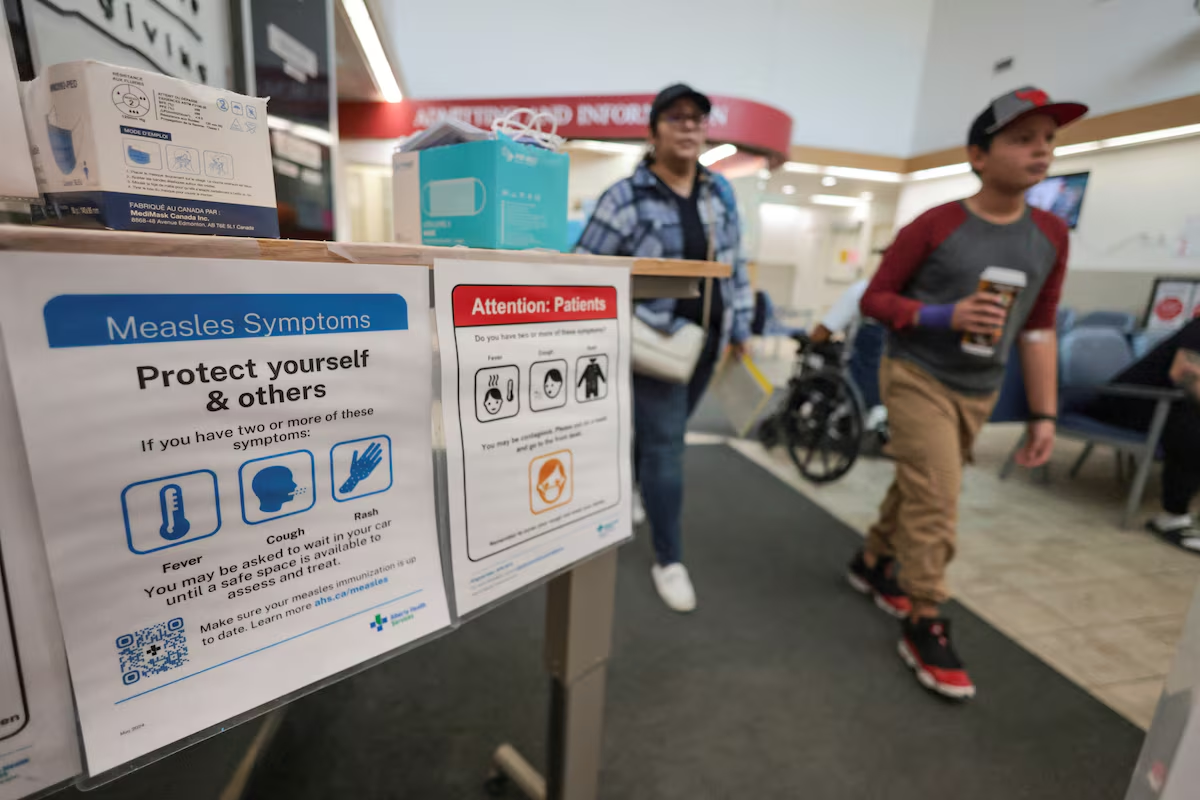Canada officially loses its measles elimination status

Open this photo in gallery:
One year after the first instance, sporadic measles cases continue to pop up in provinces such as Alberta, Manitoba and B.C.Ahmed Zakot/Reuters
Canada has been stripped of its measles elimination status after failing to interrupt transmission within one year of an outbreak that continues to spread in parts of the country.
The Public Health Agency of Canada said Monday it was notified by The Pan American Health Organization, a regional arm of the World Health Organization, that Canada lost its designation – an accomplishment it held for 27 years.
“While transmission has slowed recently, the outbreak has persisted for over 12 months, primarily within under-vaccinated communities,” the statement said.
How the measles made its way back to Canada
What happens now that Canada has lost its measles elimination status?
Health experts from Canada spent a week presenting in Mexico City on the countrywide outbreak to the Regional Verification Commission on measles and rubella elimination. This independent body reports to PAHO.
Canada’s outbreak began last October in New Brunswick after a traveller from Thailand unknowingly infected guests at a wedding in Florenceville. The virus then spread quickly between provinces, totalling more than 5,100 cases over the past year, including the deaths of two infants who contracted measles in utero and were born prematurely. Ontario and Alberta were hardest-hit.
The first locally acquired case of measles in Canada was recorded on Oct. 27 last year. Canada would have had to curb transmission within 12 months to retain its status, but it was clear to public health officials by early October it would be highly unlikely despite their enhanced efforts.
Transmission has slowed significantly but sporadic cases continue to pop-up in provinces such as Alberta, Manitoba and British Columbia. Alberta is nearing 2,000 cases, which is more than what has been recorded in the entire United States.
Ontario, however, declared an end to its provincial outbreak on Oct. 6. National guidance states an outbreak has concluded when no new cases are reported for 46 consecutive days – double the incubation period for measles.
The domestic return of measles has been largely attributed to lower childhood vaccination rates. The virus has been especially prevalent in Canada’s Mennonite community where vaccine opposition and hesitancy have opened the door for the highly contagious disease to spread freely.
The U.S. and Mexico are not far behind Canada in losing their respective measles-free designations. All three countries are facing outbreaks of the same genotype.
WHO member states are divided into six regions. Canada is part of the Americas, which includes all 35 countries in North, Central and South America, plus the Caribbean. The Americas was the first and only region to ever attain a regional elimination status.
Canada can recover its measles-free status if it stifles transmission and follows corrective measures outlined by the Regional Verification Commission. This includes enhanced vaccination and surveillance efforts.





